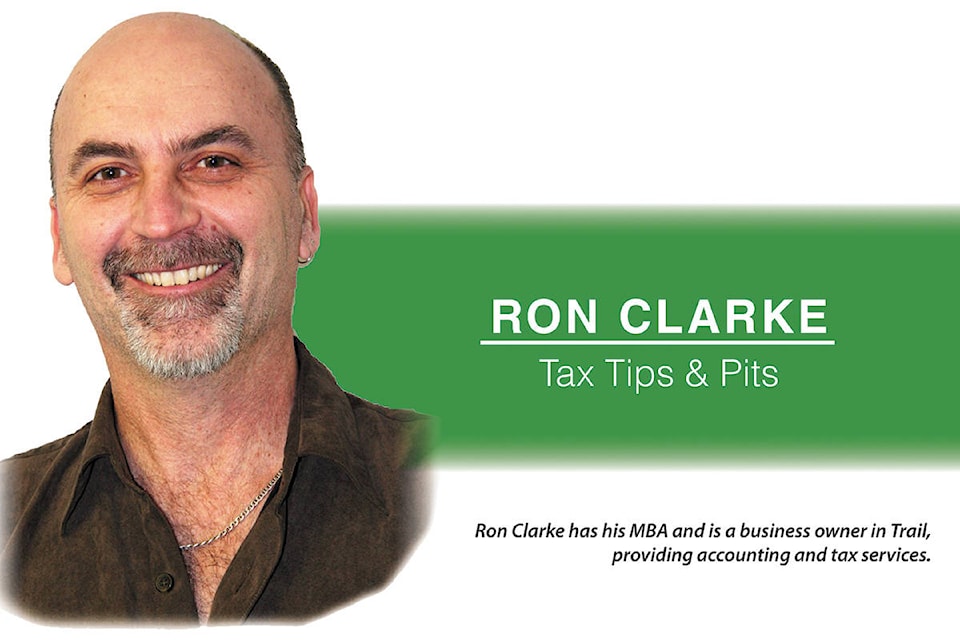by Ron Clarke
It’s tough not to pay attention to the stock market given the COVID-19 economic opportunities and threats that seem to present themselves on a weekly basis.
With that in mind, let’s say you dabble in the stock market and sell some shares for $10,000 more than what you had paid for those same shares.
What portion of the $10,000 is included in your income for taxation purposes?
If you said $10,000, you are incorrect.
If you said $5,000, you are correct.
Only 50 per cent of capital gains are included in income and then taxed at the marginal tax rate applicable to your total taxable income that year.
A common misunderstanding is that capital gains are taxed at 50 per cent.
The implication being a fixed rate of 50 per cent applies to capital gains. But the truth can’t be further from the truth.
In actual fact, because only 50 per cent of the gain is included as income and then taxed at your applicable marginal tax rate, in reality your effective capital gain tax rate is half of your applicable tax rate because only 50 per cent of the gain is included as income.
Don’t you love math.
Okay, what if you sell shares at $10,000 less than what you had paid for them?
What is reported on your tax return?
It depends.
But to begin the process, as with capital gains, the 50 per cent inclusion rule applies so only half of the capital loss is used. So the capital loss for tax purposes is $5,000 and can only be netted against capital gains.
But what if you don’t have capital gains at the time?
Fortunately, Canada Revenue Agency (CRA) gives you a choice not only to use a capital loss in the current year against capital gains, but also carry the capital loss back three years against prior capital gains, or carry it forward indefinitely to net against future capital gains.
The key being, a capital loss can only net against capital gains, except in the year of death, but that’s a story for another day.
Tax pros will also identify the fact that any direct costs associated with the purchase or sale of a capital asset, such as commissions, affect the capital gain or loss accordingly.
So the favorable tax treatment of capital gains seems like a panacea for investors.
Well, a word to the wise.
If CRA reviews your investment activities and determines that you are actually in the “business” of buying and selling shares because you do so much stock market trading, CRA has the authority to disqualify you from the 50 per cent inclusion rule.
Consequently 100 per cent of any capital gain will be taxable.
And this isn’t limited to stock market trading.
Frequent buying and selling of any asset that normally qualifies for the capital gains exemption, for example real estate, can have its capital gains 50 per cent inclusion rule disqualified by CRA.
So … has COVID-19 driven you to armchair day trading of stocks, bonds or real estate?
Well if it is determined that you are in the business of buying and selling assets and you are disqualified from using the capital 50 per cent exemption, if it helps, by default then this means 100 per cent not 50 per cent, of any loss will be claimable against any income.
Yes, any income not just capital gains.
Feeling any better?
Ron Clarke is owner of JBS Business Services in Trail, providing accounting and tax services.
